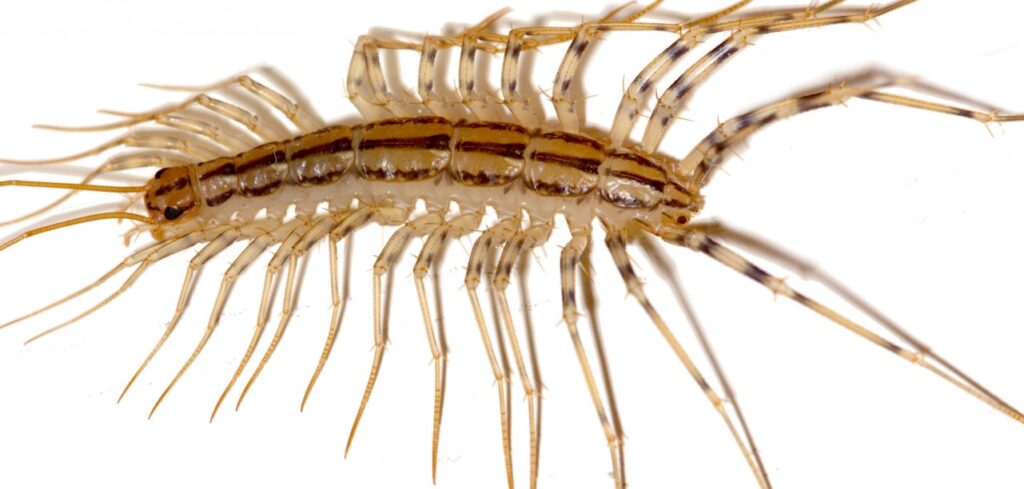Centipedes

Ask About Our
100% Eco-Friendly
Options

Centipede Control Services In Central Wisconsin

What does a house centipede look like?
House centipedes are usually 1 to 1½ inches long. They are greyish yellow with three dark stripes running the length of their back. Their body has 15 segments, each with a pair of long legs banded with white.
They are generally solitary, so infestations are rare. They can be found living in damp areas of the house, like basements, closets, and bathrooms. Sometimes they can even be found in tubs and sinks. During the warmer months, they may also be found in attics and crawl spaces. They are most active at night and hide during the day in floor drains or under cardboard boxes.
What do house centipedes eat?
Centipedes are active hunters and are constantly looking for prey. Many people would consider them beneficial to find inside homes because they kill truly unwelcome pest insects. They will kill and eat silverfish, roaches, spiders, moths, flies, and even termites, in addition to other insects. Consequently, if you frequently find it in your house, it may be a sign of a bigger pest problem.
Frequently Asked Questions
While most centipedes are not harmful to humans, some species can deliver a painful bite.
Effective centipede treatments may include using insecticide sprays or dusts, as well as sealing cracks and gaps in walls and floors to prevent centipedes from entering your home. It’s best to consult with a pest control professional for the most effective treatment plan.
To prevent centipedes from entering your home, seal any cracks or gaps in walls or floors, eliminate sources of standing water, and reduce clutter in your home.
Centipedes are attracted to damp and dark areas, so reducing moisture in your home and keeping it well-lit can help prevent them from entering.
How to get rid of house centipedes
Centipedes don’t really leave any evidence that indicates they are in your home. Instead of building a nest, they find a new hiding place each day. You are most likely to accidentally find a house centipede resting on a wall, darting out from their hiding place, or trapped in a sink or tub.
To get rid of it in your home, thoroughly clean damp areas of your house, like the basement, bathroom, or attic, and remove their hiding places. You can kill it you find with an indoor insect barrier, but the best barrier of protection would be the exterior barrier. You can also simply vacuum up it when you find them, then seal and dispose of the vacuum bag to keep them from escaping.
How to prevent & control house centipedes
To help prevent future centipede problems inside your home, there are several things that you can do.
- Reduce moisture. Centipedes prefer moist, high-humidity environments to live in. To eliminate these areas, repair water leaks, use dehumidifiers to keep basements dry, and run exhaust fans in bathrooms and attics to help eliminate excess moisture.
- Remove clutter. Centipedes will seek out spaces that provide protection. Reducing clutter in basements, crawlspaces, and attics will limit their ability to hide. Outside, move a pile of leaves, grass clippings, and firewood away from the house.
- Eliminate their food source. Controlling other insects and spiders inside your house will also control centipedes since their diet consists of insects and spiders.
- Seal entryways. Seal holes, cracks, and gaps around the outside of your house to keep centipedes and other insect pests from getting inside. Repairing tears in screens and adding weather stripping to doors and windows also help keep unwanted pests out.
- Create a barrier. Apply an indoor and outdoor pesticide barrier around your house to help keep unwanted pests out.


 Service Request
Service Request